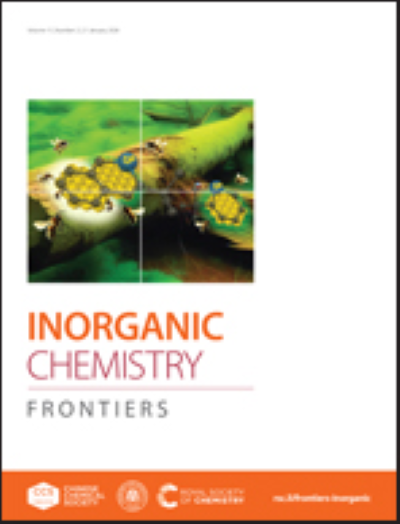胍基金属-有机笼选择性电催化还原二氧化碳制甲烷研究
IF 6.1
1区 化学
Q1 CHEMISTRY, INORGANIC & NUCLEAR
引用次数: 0
摘要
在能源短缺和环境灾害的背景下,将温室气体二氧化碳转化为高价值的碳基能源为实现可持续的人工碳循环提供了一条切实可行的途径。然而,将二氧化碳捕获与电催化相结合仍然具有挑战性。在此,我们构建了一个胍基金属有机笼作为均相电催化剂,封装并激活了CO₂和乙醇胺形成的原位加合物,显著降低了CO₂的还原电位,实现了CO₂还原成甲烷的最低电位(相对于可逆氢电极,RHE, 0.16 V)。研究表明,在-0.04 V vs. RHE条件下,甲烷的法拉第效率(FE)达到69.8%,连续运行18小时的选择性超过99%。本文章由计算机程序翻译,如有差异,请以英文原文为准。
Selective Electrocatalytic Reduction of Carbon Dioxide to Methane by Guanidine-based Metal-Organic Cage
In the context of energy shortages and environmental disasters, converting the greenhouse gas carbon dioxide into high-value carbon-based energy provides a practical pathway for achieving a sustainable artificial carbon cycle. However, integrating CO₂ capture with electrocatalysis remains challenging. Herein, we constructed a guanidine-based metal-organic cage as a homogeneous electrocatalyst to encapsulate and activate the adduct in-situ formed by CO₂ and ethanolamine, significantly lowering the reduction potential of CO₂ and achieving a record-low potential for CO₂ reduction to methane (0.16 V vs. reversible hydrogen electrode, RHE). Our research demonstrates that under the condition of -0.04 V vs. RHE, the Faradaic efficiency (FE) for methane reaches 69.8%, with a selectivity exceeding 99% for continuous operation over 18 hours.
求助全文
通过发布文献求助,成功后即可免费获取论文全文。
去求助
来源期刊

Inorganic Chemistry Frontiers
CHEMISTRY, INORGANIC & NUCLEAR-
CiteScore
10.40
自引率
7.10%
发文量
587
审稿时长
1.2 months
期刊介绍:
The international, high quality journal for interdisciplinary research between inorganic chemistry and related subjects
 求助内容:
求助内容: 应助结果提醒方式:
应助结果提醒方式:


